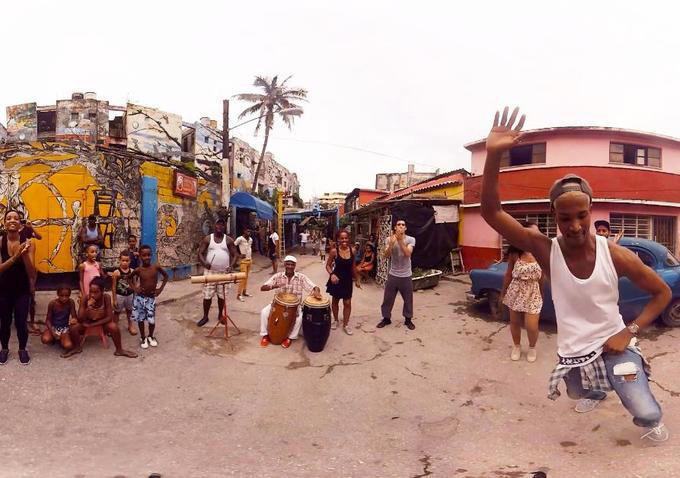Virtual Reality: New Documentary Format
I’ve been hearing about virtual reality for awhile, and last week I got to experience VR first-time at the Esalen Institute’s Inspirational Film festival. The hit of the festival was Academy-nominated filmmaker Lucy Walker, who passed around her VR headgear and gave everyone a peek at this emerging technology.
Instantly transported into another world, I saw a Cuban dancer in a public square. With a tilt of my head to the right, I could see bystanders clapping. Turning my head to the left, I saw young men dancing. In fact, wherever I looked, visual and audio stimuli told me what it was like to be there.
“Silicon Valley is pouring money into this,” said Walker, whose VR live action documentary screened at Sundance earlier this year. “Everyone’s betting on it.”
Two decades ago, low-cost digital cameras changed the documentary landscape with abilities such as shooting in low light, concealing cameras, and trekking lightweight gear around the world. Not to mention democratizing documentary filmmaking.
Today, VR is poised to take a quantum leap in giving the viewers a visceral experience of being in another world.
As you might expect, VR is currently expensive. Shooting VR requires a rig with several cameras. “It’s like turning on eight Go Pros,” said Walker, who added that shooting is not as expensive as editing, which can “require a whole farm of visual effects artists” to stitch the footage together—sometimes thousands of hours of data.
PBS Frontline founder David Fanning once said that the marvel of documentary film is its ability “to take the viewer where they’ve never been before”. Virtual reality magnifies that ability, promising to “connect us in a more profound way,” according to Vrse, a leading edge VR company.
Imagine the potential of VR to enhance a scene in which something is happening not only in front of the camera, but to the side and above and behind. And imagine how VR can leverage the power of re-enactments, allowing a creative director to design and film a set in every direction.
According to Walker, we are in such early days of VR “that no [shooting and editing] grammar has been established yet.” Currently working on two films coming down the birth canal, Walker says that each emerging VR documentary is breaking new ground. She grants that many of these movies are “very clunky…looking like first-year film school films.”
To get a sneak preview of Walker’s film A History of Cuban Dance and other VR shorts, go to Vrse.com.
Since VR is platform agnostic, you can watch it on your laptop, by moving the cursor to see 360 degrees. If using your smart phone, you can actually move your device through the air to see the scene from other angles. Of course, a VR headset is ideal, and Samsung has models for under $200.
If you are interested in using VR, we currently have a very talented editor available who is exploring the cutting edge of this new technology. Please contact me if you are interested in finding out more about working with our editors.
